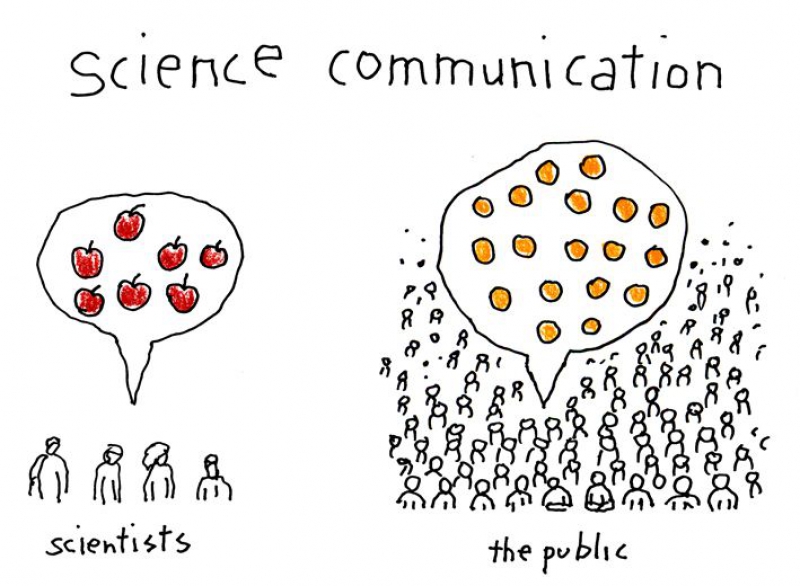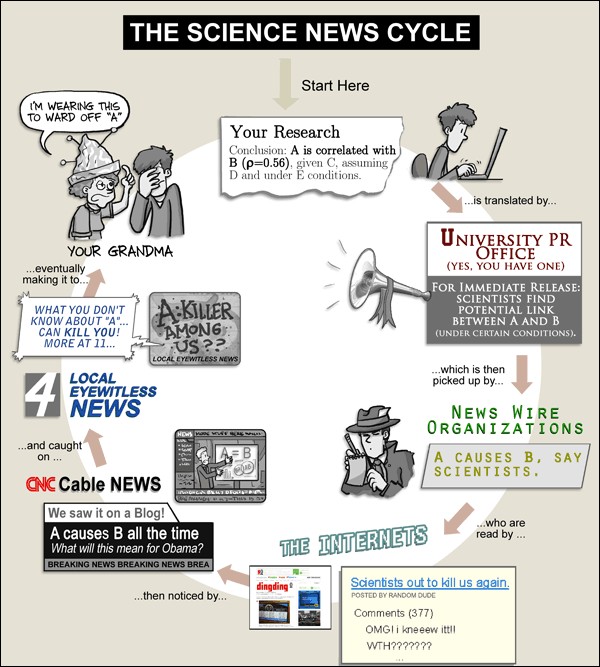This post is also available in: Spanish
Science is amazing (despite the imperfections I pointed out in the previous post of this trilogy): it develops from the edges of knowledge, opening new paths in the darkness beyond. However, those paths are often thorny and obscure, so very few dare to explore them. Popular science, in this metaphor, plays the role of a gardener that trims the way through some of these paths, puts lights on them, and plants flowers to make them more appealing. But they only pick some specific paths and often trim more that they should or fail at placing the lights.

The importance of popular science as a bridge between science and the general public is undeniable, as it pre-digests the information to make it more engaging and easier to follow. Science communicators provide an attractive summary of the latest research findings and some relevant topics. Among these communicators, there are some very good, that are experts of the topic they talk about, and that choose the right information and words to explain even complex issues without falling into biases. But not all scientists are good communicators, despite the increasing efforts aiming to encourage that line, so the niche fills up with many science amateurs that aren’t always as capable.
Therefore, the competition to attract as many followers as possible leaves more way to hot topics than it probably should, given the quality or relevance of the studies. Headlines and references are too often picked to entice the readers, not to provide a comprehensive state-of-the-art of each science topic. Some even dig into the stinky leftovers of science to get some juicy studies that they rebrand with cool headings such as ‘women with big butts are smarter‘, or ‘drinking a glass of red wine is as healthy as one hour at the gym‘.
Some of these articles are sponsored by partial entities, which is a clear indication that they are likely to be biased. Others are a result of a long chain of journalists that loses touch with the original study with every new link added, as each trusts its own guts on what is relevant or what is not. And it is when stinky papers are spread and ornated without skepticism that witch-hunters bloom, waving their hayforks with messages against vaccines, or saying that cancer can be cured with papaya juice and that climate change is a lie.

It is probably worth giving a specific paragraph to celebrities and symbolic characters, given the attention they attract, when they become thought leaders (by either personal or public choice) of certain causes without being aware of their complexity. To be fair, some of these so-called ambassadors are quite well informed, and at the end of the day the role of a communicator is to transmit the information clearly and in an attractive manner, which is the forte of the stars. However, I find it worrying that, as recipients, we tend to mistake communication skills and physical appearance for actual knowledge, and we seem to need a symbol to validate the message.
Whenever I see famous characters taking a stance on a cause at first glance just, I feel uneasy, because they bring their followers and haters with them, and many would follow or reject the idea only based on the celebrity’s choices. They are also a tool and a weapon for those affected that is brought to the middle of the battleground, where the opponents would attack their weaknesses and extrapolate them to the cause. It’s judging the book by its cover in a radical fashion. At times, Hitler could have said truths and Gandhi could have been an idiot… and maybe there are memes out there quoting a wise person that aren’t true.
As critical readers we should be very careful with the information we receive (most of all before spreading it), and scientific information is not an exception to the rule. Therefore, the next (and last but not less important) post of the trilogy will focus on our side of the information triangle.

 Aragonese
Aragonese English
English Spanish
Spanish